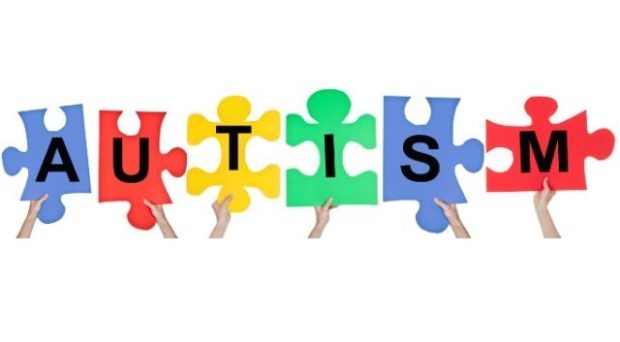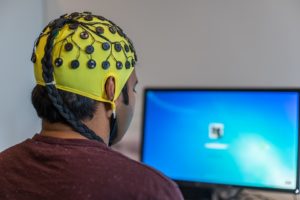
Objective identification and effective treatment options are primary priorities for families of individuals with autism spectrum disorder (ASD). The Interagency Autism Coordinating Committee (IACC) continues to stress the need for the development of biomarkers that can predict who will benefit optimally from a given treatment.

Effective biomarkers may aid in diagnosis and screening or may subtype individuals based on shared underlying characteristics. In the case of clinical trials, biomarkers may monitor treatment response, determine responders or optimal drug dosage. Precision medicine uses biomarkers to identify which individuals are expected to respond positively to a given treatment or which treatment option is most appropriate for a given individual.
In addition to objectivity, biomarkers must be reliable, quantifiable and sensitive to change. Feasibility with respect to age and level of functioning are also critical; it is unlikely that a single biomarker will be effective across developmental stages and therefore a combination of biomarkers may be most robust. Implementation and scalability are also key factors. The feasibility of widespread dissemination, including financial and human capital requirements and practicability across settings, will ultimately determine a biomarker’s success.
Biomarker discovery in ASD is complicated by the wide variability in clinical presentation within core symptoms and among variables such as cognition, language, and comorbid medical (e.g., epilepsy) or psychiatric symptoms. Clinical observation, including standardized measures of observable behavior, has been ineffective for patient stratification, as evidenced by the shift from the DSM-4 to DSM-5; the DSM-5 combined five previous diagnostic categories into a single spectrum disorder.
 ASD biomarkers currently under development range from blood-based markers to neuroimaging and electrophysiological (EEG) markers to behavioral markers utilizing sophisticated technology such as eye tracking. A number of studies have explored and discovered potential biomarkers for ASD.
ASD biomarkers currently under development range from blood-based markers to neuroimaging and electrophysiological (EEG) markers to behavioral markers utilizing sophisticated technology such as eye tracking. A number of studies have explored and discovered potential biomarkers for ASD.
The development of large consortia has the potential to make great progress in ASD biomarker development. For example, the EU-AIMS Longitudinal European Autism Project (LEAP) seeks to identify and validate stratification biomarkers using neurocognitive measures, neuroimaging, electrophysiology, biochemistry and genetics. Recent articles published in Molecular Autism explain the methodologies and clinical characterisation being undertaken in this project. In the United States, the Autism Biomarkers Consortium for Clinical Trials (ABC-CT) represents another multisite biomarker discovery effort. ABC-CT focuses on core social communication symptoms using EEG, eye tracking, and automated technology to measure behavior.

In addition to large scale efforts, other groups are taking a genetics-first approach to biomarker discovery by studying individuals with known mutations or deletions in specific genes that result in an ASD phenotype. Molecular Autism publishes numerous research articles covering this topic, including a recent article which explored mutations specifically causing FOXP1 syndrome.
Biologically relevant and developmentally informed biomarkers are critical to the identification of effective treatments for individuals with ASD.
Using genetics as a first line biomarker allows for the study of smaller, but more homogeneous groups of individuals who present with similar underlying biological causes. This approach also offers targeted translational studies, for example, testing treatments in model systems and then bringing treatments deemed safe and effective to individuals with the same genetic abnormalities, as seen in the application of insulin-like growth factor-1 (IGF-1) treatment to children with Phelan-McDermid syndorme. Biomarkers demonstrating efficacy in single-gene cases of ASD may then be translated to individuals with ASD who show similar biological responses in the absence of a known genetic cause.
Exciting advances are underway and operational biomarkers reflecting particular aspects of ASD may be within reach.
Tune into The Mount Sinai Hospital Facebook on the 7th of August at 1pm EST / 5pm GMT to hear myself, Dr. Paige Siper, speak in more depth about the topic of research into biomarkers of Autism at the Seaver Center.
Learn more about the Seaver Autism Center at www.seaverautismcenter.org
Discover more of the current research ongoing in this field at Molecular Autism.
Dr. Paige Siper
Dr. Siper’s research focuses on biomarker discovery and sensory processing using electrophysiological and behavioral approaches. Dr. Siper is the co-developer of the Sensory Assessment for Neurodevelopmental Disorders (SAND), which is the first clinician-administered observation and corresponding caregiver interview to quantify sensory reactivity according to DSM-5 criteria for autism spectrum disorder (ASD).
Latest posts by Dr. Paige Siper (see all)
- Detecting autism spectrum disorders: biomarker discoveries - 30th July 2018
Comments